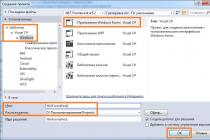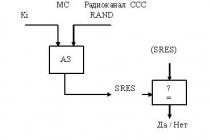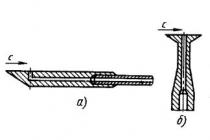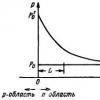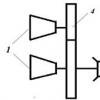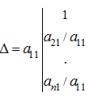In 2016, you won't surprise anyone with a smartphone with two sim cards. If earlier such functionality was considered the lot of budget Chinese handsets, now world giants (like Samsung or Sony) do not neglect installing a second slot in their flagships. Only Apple stands on the sidelines, seemingly not going to be led by the market.
At first glance, all smartphones with two sim cards are no different in terms of working with networks. But in fact, they can be divided into 2 groups: Dual Standby and Dual Active. The main differences between them are that in Dual Standby technology sim cards work alternately, and in Dual Active in parallel, independent of each other.
The first technology is easier to implement and therefore occurs most often. In this technology, the phone does not exchange data with communication towers simultaneously with two SIM cards, but does it alternately, then one, then the second. This is enough for the towers located in the access zone to confirm the activity of the subscriber.
The disadvantage of Dual Standby technology is that the device is unable to simultaneously send a request from two SIM cards. As a result, when a conversation is being conducted on one SIM card, the second is unavailable. Sometimes it will not be possible to get through if one of the cards supports an Internet connection, exchanging packet data with the database. And if identical IMEIs are assigned to both numbers belonging to the same operator, then at such moments the activity of one SIM card can completely "knock out" the other from the network.
For smartphones with two radio modules (Dual Active technology), these problems are not relevant. Each sim card has its own active transceiver, with which it keeps in touch with the base. Accordingly, if you are talking on one number, you will be able to hear and receive a call to the second number at the same time. The only pity is that in 2016 there are not many such pipes left.
Two active modules increase the cost of production, require fine optimization of energy consumption, and therefore are not popular among manufacturers. Our material is devoted to those few smartphones that are equipped with two radio modules, and which are still relevant in 2016.
Asus ZenFone 2 ZE551ML is a relatively fresh, and therefore relevant, smartphone with two radio modules. It was released in March 2015, and now the device can be purchased at prices ranging from 180 (2 GB RAM / 16 GB ROM) to 350 (4 GB RAM / 64 GB ROM) dollars. In addition to the amount of memory, processor versions differ. The 2 GB model uses Intel Atom z3560 (4 x86 cores, up to 1.8 GHz), from 4 GB - z3580 (4 x86 cores, up to 2.3 GHz).
Screen Asus ZenFone 2 - 5.5-inch FullHD, with IPS matrix and protective glass "Gorilla" of the 3rd generation. The camera is 13 MP, with a dual flash, f / 2.0 aperture and autofocus (not laser, conventional). Operating system- Android 5, an update to the "six" is planned.
A 3000 mAh battery is typical for a phablet, but considering that 2 modules mean increased power consumption, the battery life can be called average. The Asus ZenFone 2 will only last two days if it is not overloaded. In general, the device is balanced, and thanks to the hardware from Intel it is also quite fast.
The second smartphone with two simultaneously working radio modules - Huawei Honor 7. It was released in July 2015 and can now be purchased for $ 350. The smartphone runs on the HiSilicon Kirin 935 chip, which has eight cores (frequencies up to 2.2 GHz). RAM 3 GB, built-in storage - 16 or 64 GB. There is a slot for a memory card, it is combined with the slot of the second sim card.
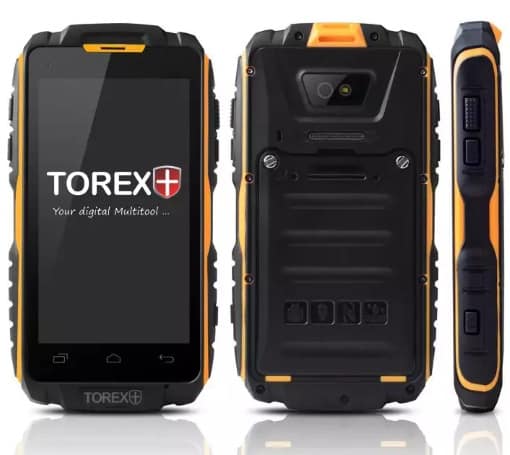
The display of Huawei Honor 7 is built on an IPS matrix with a resolution of 1920 × 1080 pixels, and a diagonal of 5.2 ". The 20 MP camera has an aperture of f / 2.0, is equipped with phase detection autofocus and dual flash. The smartphone is running Android Lolipop, you can upgrade to the sixth version. ...
Non-removable battery with a capacity of 3100 mAh. It will last for 13 hours of reading, 10 hours of video, 4 hours of games or 2 days of standby time. Huawei Honor 7 is a really good, once-flagship gadget from a Chinese manufacturer, and one of the few "clean" dual-sim phones in this category.
Huawei has other products with Dual Active SIM support (almost every model over $ 250 comes with this modification). But everything is very complicated there with the versions: for different regions of the world, they put radio modules, sharpened for the frequencies of a particular market. Among the "Europeans" other two-symbolic devices of Huawei are not found.
HTC Desire 700 is a real long-liver: it was introduced back in November 2013, and appeared on sale at the beginning of 2014. At the moment, its characteristics look relevant only in the budget category. It's a shame to pay $ 165 for a model that is more than 2 years old, but if you need a phone with two active radio modules, then there is not much choice.
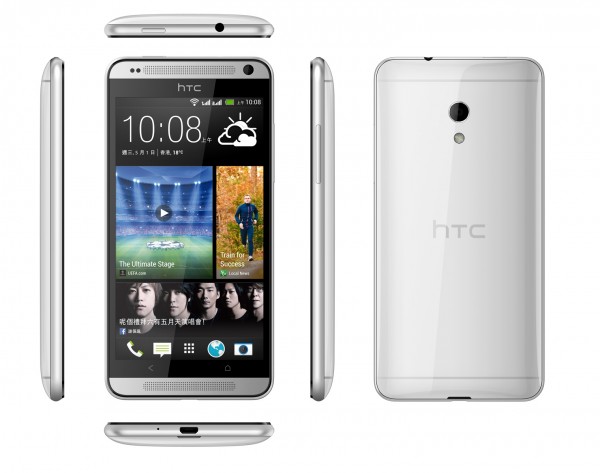
HTC Desire 700 is powered by a 1.2MP quad-core processor. There is 1 GB of RAM, about 5 GB out of a total of 8 are allocated for data. There is a microSD slot. The screen is a five-inch 960x540. The camera has a resolution of 8 MP, is equipped with autofocus and diode flash. The OS of the device is already outdated Android 4.1.
The battery in HTC Desire 700 is removable, its capacity is 2100 mAh. A little, but enough for a day of moderate loads. But longer - already how it will turn out: if both SIM cards are active, the charge is consumed quickly.
Lenovo K910SS
Lenovo Vibe Z K910SS is another not new, but still relevant smartphone with two radio modules. It came out in September 2013 and became, probably, latest Lenovo with support for simultaneous operation of both sim cards in transmission mode. The model with two Ss in the suffix is the Chinese version, which is not easy to find, but still realistic. The issue price is about $ 200.
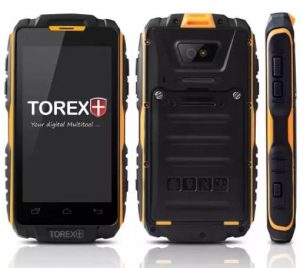
The smartphone is powered by Qualcomm processor Snapdragon 800. This quad-core chip, clocked at up to 2.2 GHz, is the flagship of 2013. The RAM in Vibe Z is 2 GB, which is normal even by the standards of 2016. About 12 GB (out of 16) are allocated for files, there is no memory card slot, but there is OTG.
The 5.5-inch screen is equipped with a FullHD IPS matrix. Safety glass(Gorilla Glass 3) is present. The 13 MP camera is unremarkable: there is autofocus, there is a flash, video in FullHD writes, the overall quality of shooting is average. Initially, the Android 4.2 OS was installed on the smartphone, later version 4.4 appeared, and the craftsmen ported CyanogenMod to Android base 5.1.
The 3050 mAh battery provides autonomy, which there is nothing to blame or praise for. 4 hours of games, 8-10 videos, 12 readings, a little over 2 days in standby mode are typical figures for most smartphones.
Conclusion
Finding the current smartphone with two radio modules is not easy. As the review showed, all devices with support for the simultaneous activity of both sim cards were released in 2013-2015. Plus, most of them are either made in China, or for China, or both at the same time.
Given the trend, the second radio module will soon become a thing of the past. However, if you do not want to miss a call on one card when another is active, you can simply set up cross-forwarding. And then a call to an unavailable number will automatically be redirected to the one you are currently talking to.
Today you won't surprise anyone with a smartphone with two or even three SIM-cards - it has become almost as natural as touch screen... Another thing is the joint work of several SIM cards. As a rule, one radio module and an alternating type of work are used, and while you are talking on one phone number, calls and messages from instant messengers do not reach the other. If this state of affairs does not suit you, you need to pay attention to smartphones with two radio modules. Once we have already prepared, but there are still very few such devices on the market, so the choice will not be great.
The smartphone was released last year and is still in great demand in the domestic market. Huawei has established itself as excellent quality devices and not very high prices. Honor 8 is made in the best traditions of the company. He received glass back panel, metal frame, 8 different colors. The screen is protected by glass Corning Gorilla Glass 3, has an anti-reflective coating, a pixel density of 423 ppi.
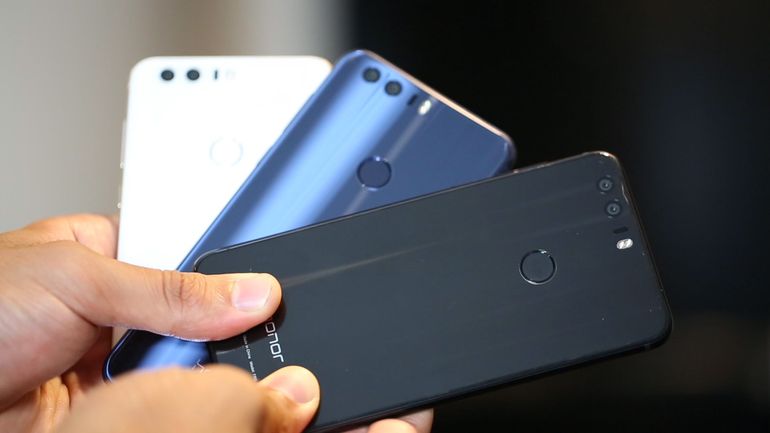 The battery is not very capacious, but thanks to the optimized filling, energy saving mode and technology fast charging problems with the battery, or rather the replenishment of its energy, will be a minimum. Feature of the model - two main cameras: one shoots in color, the other in monochrome. Thus, it is possible to capture more light, so that the pictures are clearer, better quality and have accurate color reproduction. The quality of the photo is at the level. The performance also did not disappoint: 4 cores at 2.3 GHz and 4 at 1.8 GHz allow you to cope with any task without any problems.
The battery is not very capacious, but thanks to the optimized filling, energy saving mode and technology fast charging problems with the battery, or rather the replenishment of its energy, will be a minimum. Feature of the model - two main cameras: one shoots in color, the other in monochrome. Thus, it is possible to capture more light, so that the pictures are clearer, better quality and have accurate color reproduction. The quality of the photo is at the level. The performance also did not disappoint: 4 cores at 2.3 GHz and 4 at 1.8 GHz allow you to cope with any task without any problems.
The main feature is two active radio modules... In addition, the manufacturer added the "Signal +" function to improve the quality of signal reception and the "Wi-Fi +" function, which allows you to connect to the most powerful network among the existing ones (Wi-Fi or 4G / 3G). In fact, this is the only powerful modern smartphone with two radio modules, so it can be safely called the best.
Torex S18

The manufacturer decided that it is especially important to always stay in touch on all numbers when you are far from civilization, so it added the dual active function to its secure smartphone. The gadget received shockproof housing, water and dust resistant IP68, which made the case quite massive. The filling is mediocre, but for working with instant messengers, mail and social media(and what else is needed in nature or in extreme conditions?) it is enough. The screen is also far from the most ideal, but it consumes a minimum of energy, so 3500 mAh is enough for 360 hours of standby time. If it is important to have two active SIM cards inside a protected case, then this is a good option, albeit a little expensive.
The company also has Torex Mini with 2.5-inch screen, 256 MB random access memory and a 900 mAh battery costing just over $ 100. The device could be considered as an unkillable dialer, but it seems that the processor will not handle interaction with two active SIM-cards.
Conquest S6

Another rugged smartphone that allows you to receive calls simultaneously on two SIM cards. The filling here is also not the most productive, but this format it does not require it. The device is protected from water and dust by standardIP68 , has shock protection, is equipped with glass Gorilla Glass 3, it provides the ability to operate with gloves, there is even a loop for attaching a carabiner - it turns out such a powerful brick that is not afraid to drop or get wet.
ASUS ZenFone 2
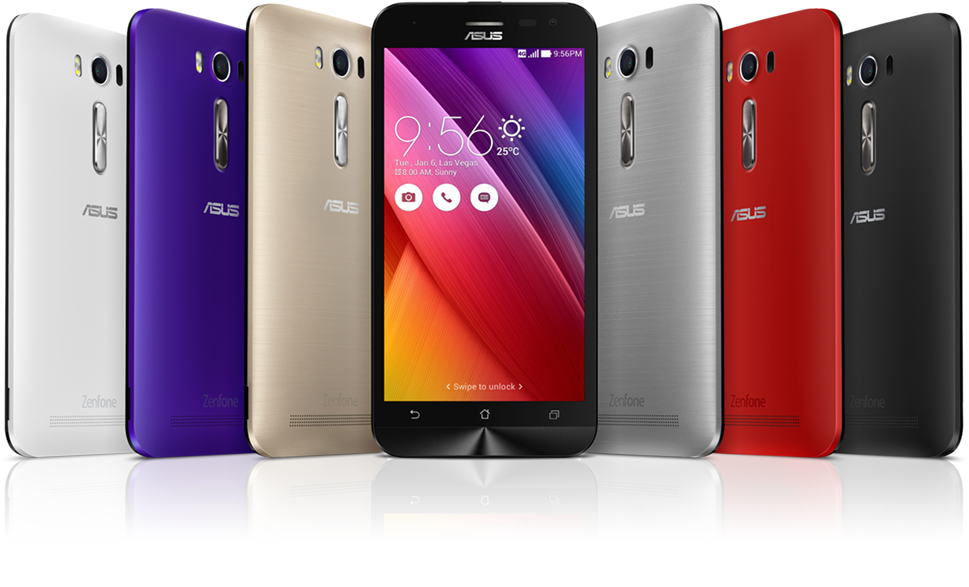
Just think, the model was presented back in 2014, but it is still actively sold and is in considerable demand, because among dual-radio smartphones this is one of the few normal options. The device is available in versions with different memory capacities, equipped with FullHD display, a good battery for such a filling and a recognizable zen-strip, around which there has always been a lot of controversy. Calling the gadget modern can only be a stretch, but it is definitely worth considering it as an inexpensive alternative to Huawei Honor 8.
This, alas, is all. Maybe someday there will come a fashion not only for a dual camera and frameless screens, but also for dual radio modules.
Smartphones with support for two SIM cards are incredibly popular in Russia. The reason for this was the use by Russian consumers of the services of two providers at once. Chinese brands were the first to equip their phones with dual SIM card slots, and later were joined by major players in the mobile market.
We have selected the most interesting devices as of the beginning of 2017, which have dual-SIM support, so that you can quickly figure out what needs to be considered first.
1.Samsung Galaxy A5 2017
Smartphone Samsung Galaxy A5 (2017) is a wonderful device South Korean manufacturer good value for money. He definitely possesses a large number pluses than minuses. A device with 32 GB of internal memory will cost you 27,990 rubles.
Advantages:
- Waterproof case
- 16MP main and front cameras
- Fast processor and functional shell
- Fast charging
- Separate memory card slot
- Lots of memory and a large battery
- USB Type-C
Disadvantages:
- Android 6.0.1 Marshmallow
- No infrared port
- No 4K video recording capability
2. OnePlus 3T
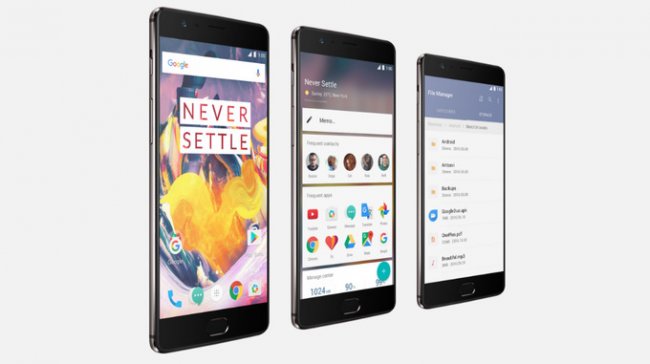
Announced at the end of 2016, OnePlus 3T received flagship hardware, as well as powerful battery to him. The device has on board the Snapdragon 821 and 6 GB of RAM. It is available on the shelves of Russian stores with a price tag of 31 thousand rubles for a model with 64 GB of ROM and 37 thousand for 128 GB of internal memory.
Advantages:
- One of the fastest and most convenient fingerprint sensors
- Crisp Optic AMOLED Screen
- Large 3400mAh battery
- Sufficient RAM and internal memory
- Lightweight aluminum body
USB Type-C
Disadvantages:
- No microSD support
- Not compatible USB cable Type-C with other devices
3. Xiaomi Mi Mix

This smartphone will seem interesting to those who think 5.5-6 inch giants are not enough. The Xiaomi Mi Mix is amazed by its 6.4-inch panel with a record ratio to body of over 90%. Xiaomi sells its gadget at a price of 44 thousand rubles.
Advantages:
- Giant screen with impressive body-to-body ratio
- Capacious 4400 mAh battery
- Plenty of internal memory as well as RAM
- USB Type-C port
- Most fast processor Qualcomm
- Impressive design (ceramic case)
Disadvantages:
- Extremely fragile design, worth wearing in a case
- Front camera takes mediocre pictures
- No slot for microSD memory card
- Deprived of water protection
4. Huawei Honor 8
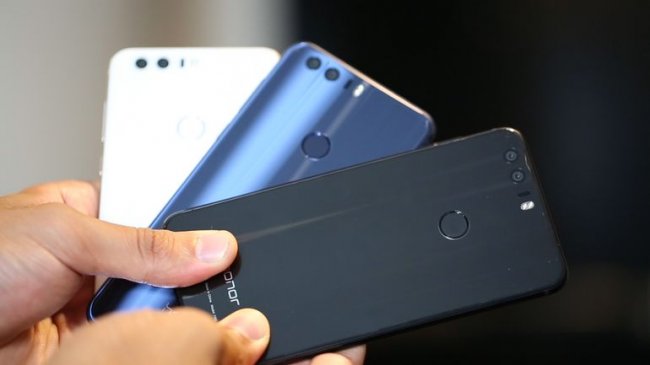
Stands out for its multifunctional user interface, body assembly the highest level, as well as the presence of all modern technologies... It is very fast and has a long enough battery life. Now you can buy Honor 8 at a price of 22,800 rubles, which is very good.
Advantages:
- Unique dark blue design color
- Beautiful and smooth shell with a lot of functionality
- There is an infrared port
- Fast charging
- Fingerprint sensor responds instantly
- Rugged glass-covered body
- Two radio modules
Disadvantages:
- The battery gives out average values
- Slightly slippery body
- Sound is not loud enough
5. Xiaomi Mi5S
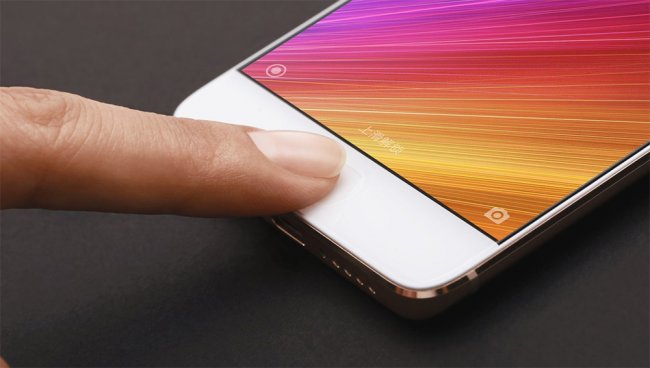
This device is capable of seriously competing with the OnePlus 3T. It doesn't have a lot of RAM and also has a smaller battery, but it will cost you a lot less. It is possible to purchase Xiaomi Mi5S at a price of 21 thousand rubles.
Advantages:
- Fast charging
- Excellent build quality
- Excellent flash
- Powerful processor
Disadvantages:
- Main camera
- No memory card slot
- Quiet speaker
6. Meizu MX6
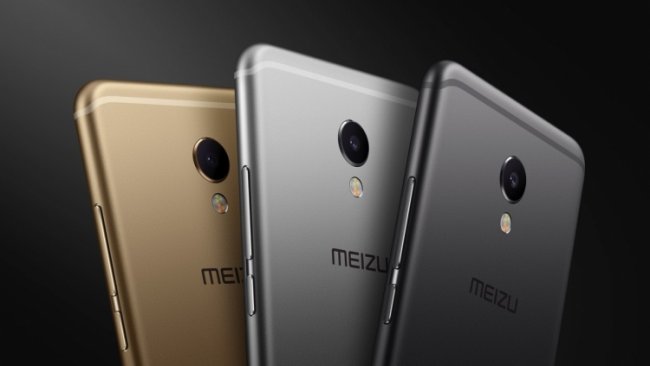
Meizu MX6 is one of the most interesting offerings of the Chinese brand. The device has an attractive design, excellent performance and, most importantly, a good price. For a model with 32 GB of built-in and 4 GB of RAM, you will have to pay less than 20 thousand rubles.
Advantages:
- Design and quality of materials used
- Loud speaker
- Fingerprint sensor works instantly
- Fast charging
- Both SIM cards can work in 4G Cat 6 networks
- Very bright and contrasting screen
- USB Type-C
Disadvantages:
- The display is scratched quite easily
- No memory card support
- Both cameras take mediocre photos
Dual SIM in modern smartphone is perhaps a standard that even big-name market leaders such as Samsung do not neglect. Even conservative Apple has similar experiences. Often such devices are confused with phones equipped with two radio modules, in fact, we are not talking about regular phones for two SIM cards. Two radio modules - this is the ability to use each of them at the same time. Most devices, unfortunately, only allow each SIM to be used alternately while the other is in standby mode.
Technologies: DSDS and DSDA
Almost all, without exception, phones on the market today work with two SIM cards in DSDS mode ( Dual SIM- Dual Standby), which implies alternating operation of each of them. Both SIM-cards adopted in the gadget use one radio module for communication, which means that when making a call using one of them, it will be impossible to receive a call on the other. The same applies to the Internet, talking on the phone using one SIM card, it will be impossible to use the mobile Internet on the other.
In the case of DSDA (Dual SIM - Dual Active), the situation is exactly the opposite, Cell Phones with two radio modules are able to interact with each SIM-card in parallel, without interrupting each other's work.
Dual-radio phones: pros and cons
Of course, such devices are not purchased out of idle interest, they have a number of advantages that attract attention:
- A phone with two active radios allows its owner to never lose connection. Where the SIM-card of one operator may be powerless, the card of another will do just fine, therefore, the presence of two simultaneously functioning radio modules at once has a beneficial effect on the availability of the user as a subscriber.
- Another advantage of such gadgets is more stable operation. mobile internet, which does not turn off even in the case of a conversation on one of the SIM-cards.
- Naturally, mobility. Two SIM cards, coupled with two radio modules, eliminate the need to have and carry two phones with you forever.
- The last on the list, but far from the last in value, plus is the ability to combine favorable conditions of two different operators. There can be a great variety of schemes, because each operator has its own conditions. In addition, many people love to travel and will definitely not do without an additional SIM card in addition to the main one.
The rainbow picture described above is spoiled by several shortcomings:
- Firstly, phones with two radio modules require high production costs, components are more expensive, and the assembly and optimization process is much more complicated.
- Secondly, the radio module is a complex device and at the same time the most demanding thing in a phone (after a display). Both facts lead to inevitable losses in autonomy, forcing you to constantly live near the outlet or carry a portable battery with you.
- Thirdly, there are studies suggesting that radio waves negatively affect the human body, leading to the development of cancer. Having two radio modules in a phone is the same as holding two phones near your head at a time. Many believe that in this way you can literally fry the brain.
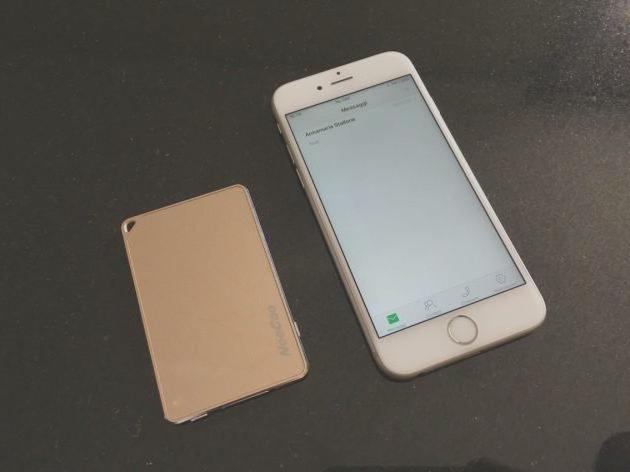
Falling supply
Obviously, the number of phones that support DSDA is incomparably small compared to phones, this technology not supportive. It is believed that such devices were banned in the European Union due to the excessive radiation of such smartphones, which do not meet the standards of the countries of the union. There is also a certain conspiracy theory of operators, allegedly they do not want to see a competitor's SIM card in one phone next door. One way or another, the market cannot boast of a rich assortment of DSDA smartphones, but you can still find a couple of diamonds.
HTC Desire 700
The Taiwanese office of HTC is perhaps the most long-suffering in the smartphone market. Once a thriving brand, over the past 5 years it has lost everything: money, fame, reputation. Nevertheless, HTC continues to release devices, has its own unique, and most importantly recognizable style.
Desire is a symbiosis of style and build level high class, with budget-class hardware. The price for all this stuff varies within the average.
On the front panel of the Desire 700 is a large 5-inch display with a resolution of 960 by 540 (the number of dots per inch - 220). The heart of the smartphone has become, atypical for the manufacturer, the Spreadtrum Shark chip with clock frequency 1200 megahertz. Also, under the hood of the smartphone, there is 1 gigabyte of RAM and 8 gigabytes of main memory (there is support for memory cards up to 64 gigabytes). The volume of the battery is also not impressive, with a rather impressive size, the gadget was able to fit a battery of only 2100 milliampere hours.
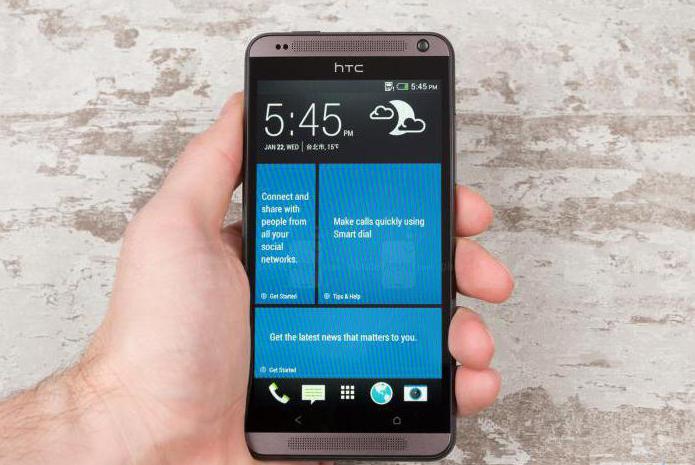
HTC One M7 Dual
Another gadget about the Taiwanese manufacturer, this time the flagship. The M7 model came out not so long ago, therefore it is more than relevant and advanced.
On the front of the M7, a fairly large 4.7-inch display with high resolution 1920 x 1080 dots (dots per inch - 469), with Super LCD technology. Responsible for performance is the popular Qualcomm processor, clocked at 1700 megahertz. The amount of memory is twice that of the Desire 700: 2 gigabytes of RAM and 32 gigabytes of ROM. A 2300 milliampere hour battery is installed inside.
Boom Sound speakers have become a trademark of the device, allowing you to play high-quality stereo sound directly through the speakers of your smartphone. It also features a 4-megapixel camera with double pixel technology for high-quality shooting in the dark.
Network standards supported: GSM and WCDMA
Considering the fact that mobile phones with two radio modules have become outlandish, such a solution from HTC looks extremely dignified and attractive.
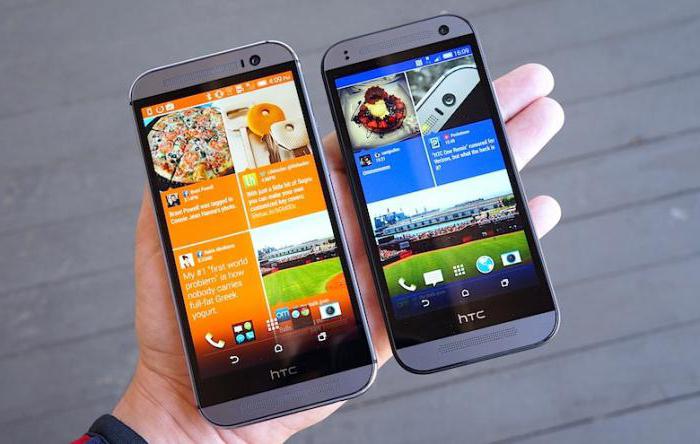
Huawei Honor 7
A smartphone manufacturer from China, with an unpronounceable name, has recently begun expanding into Russian market and the market of the CIS countries. The brand is actively promoted on the Internet, popularized cellular operators, and all this is fueled by eloquent CEOs who promise to sweep away all competitors in the coming years. Among other things, Huawei loves phones with two radio modules, the list of which in the company's range is quite extensive.
One of the best gadgets, smoothly balancing between price and quality, is the Huawei Honor 7, released in the middle of last year. The phone has a large 5.2-inch display with a resolution of 1920 x 1080 pixels. Behind it lies the power of the proprietary Silicon Kirin 935 chip with a frequency of up to 2200 megahertz. I am also pleased with the amount of memory, which the Chinese have never skimped on, 3 gigabytes of RAM and up to 64 gigabytes of the main one. Another argument in favor of the Honor 7 is its large 3100mAh battery.
As for the supported communication standards, the situation here is very ambiguous, since each model is equipped with a unique set of radio modules developed for a specific market.

ASUS ZenFone 2
Leader of this list, definitely, best phone with two radio modules for Android. The ASUS product may not look like a flagship, but it is able to hook with its inner beauty, the most powerful technical component.
ZenFone 2 has the largest display in our collection, a gigantic, full-bodied 5.5-inch 1920 x 1080 capacitive screen, protected by a third-generation coating. The high performance of the smartphone is provided by a processor from Intel, which has a 64-bit architecture and 4 cores, each of which has a clock speed of 1800 megahertz. The amount of RAM in 4 gigabytes allows you to actively use a lot, at a time running applications without the threat of unloading them from memory and losing data. 32 gigabytes of main memory can be supplemented with another 64 gigabytes, a microSD card. Long battery life is supported by a 3000mAh battery. Two cameras complement the picture: the rear one is 13 megapixels and the front one is 5.
Network standards supported: GSM and HSDPA
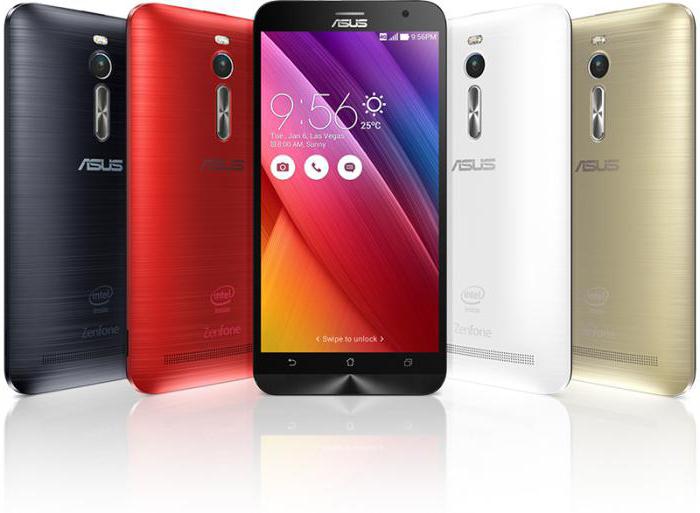
Zopo ZP980
Option for those who prefer simpler devices. Chinese brand Zopo looks more like some kind of fake, but nevertheless deserves attention, since it has two radio modules.
The first thing that catches your eye is the impressive diagonal of the display (5 inches) and the resolution (1920 x 1080 pixels). At the same time, the device retains a fairly compact size. Unfortunately, that's all that can impress this budget Chinese. The device has a chip from MediaTek with a clock frequency of 1200 megahertz, a small amount of RAM, only 1 gigabyte. The amount of built-in memory is also not impressive, 16 gigabytes with the possibility of expanding through memory cards. The device turned out to be thin, therefore, there was no place for a large battery, the owners of the gadget will inevitably have to put up with the battery, the volume of which is 1860 milliampere hours.
In general, the ZP980 is the choice of those who are not ready to spend money on a flagship and are not afraid to order phones online.
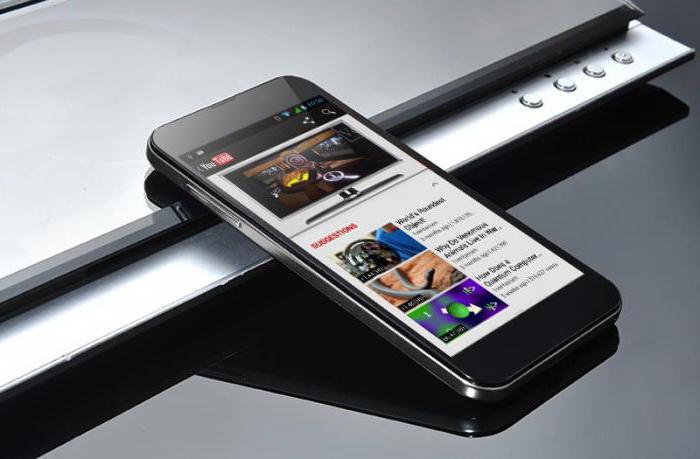
External DSDA modules
This solution applies to Apple devices. Despite the fact that on the Internet from time to time there are rumors and patent applications related to the support of two SIM-cards in the iPhone, to date there is none. The Chinese came to the aid of the disadvantaged with their next know-how, which bears the name NeeCoo Me 2.
The device is a small block with two radio modules and two slots for SIM cards. The gadget communicates with the iPhone via Bluetooth and allows you to make calls from two different SIM cards. Calls can be made even if there is no SIM card in the smartphone itself, which means that NeeCoo Me 2 is suitable for all gadgets running iOS, including iPad.



